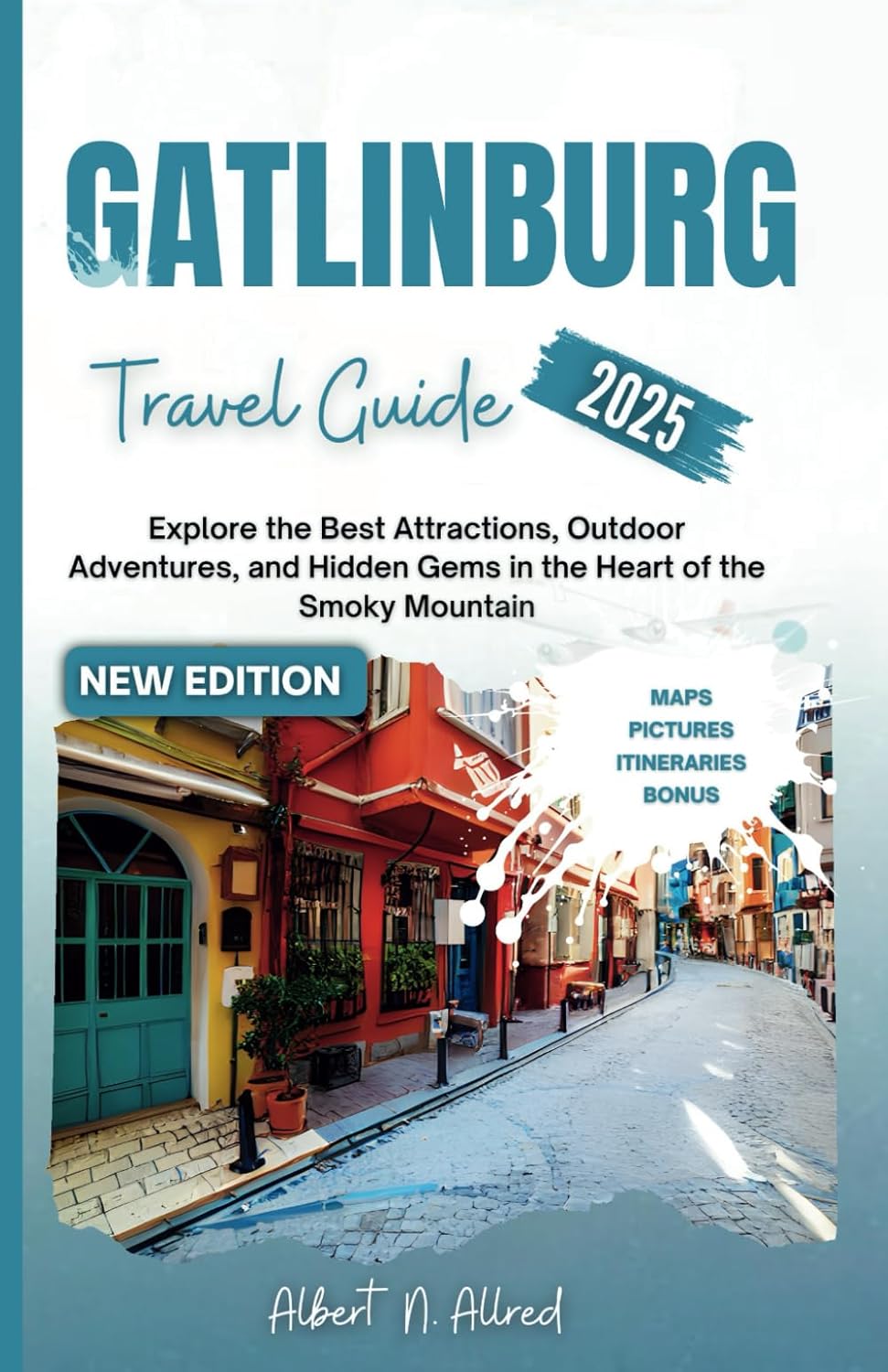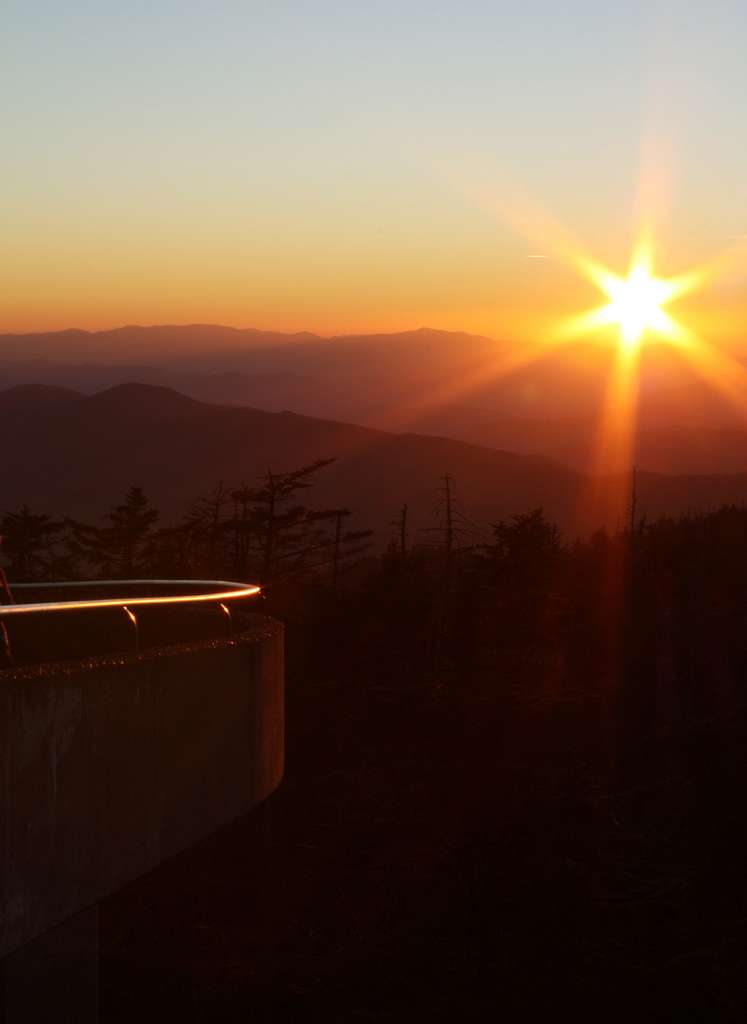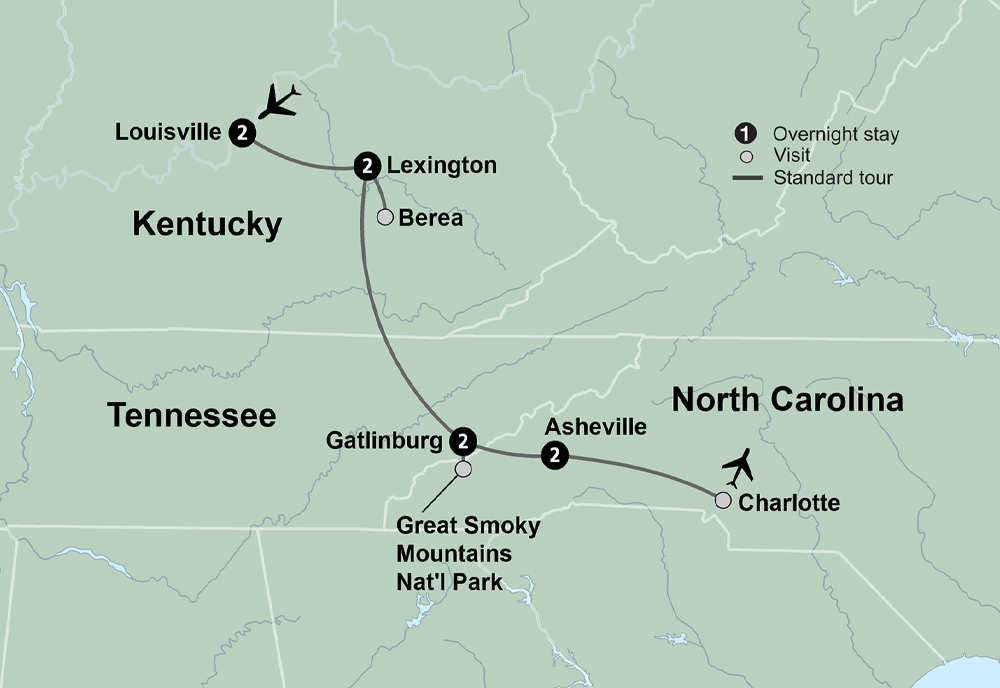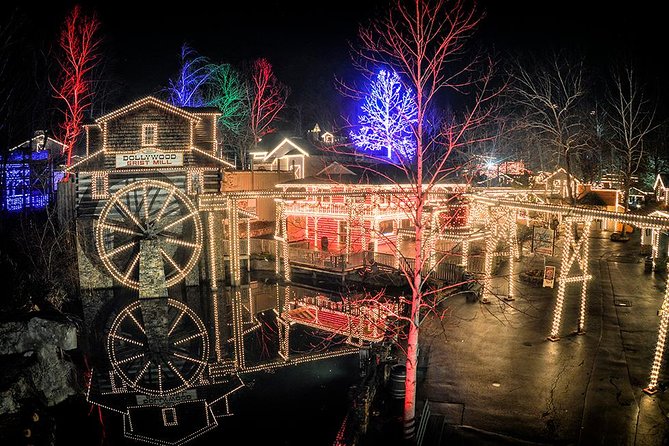When the Sky Burns Gold Over the Smokies
There’s something almost sacred about watching the sun dip behind the mountains of East Tennessee. I’ve stood at overlooks all across the Smokies—from the highest ridges of Clingmans Dome to the quiet valleys of Cades Cove—and I can tell you there’s no better way to end the day than watching the sky turn shades of fire and gold. These aren’t just sunsets—they’re soul-settling moments that imprint themselves in memory. If you’ve never experienced this golden hour magic, you’re missing a part of what makes the Smokies so unforgettable.
The Smoky Mountain sunsets are more than just beautiful—they’re transformative. That’s why finding the right scenic viewpoints for sunset photography is crucial. These are the places where the light hits just right, where mountain layers stack like watercolor paintings, and where the sky opens up in dramatic hues that shift by the second. If you’re a photographer—pro or hobbyist—or simply someone looking for peace at the end of a trail, these spots will move you.
Don’t miss your golden hour moment—secure the perfect place to stay so you’re just minutes from the most iconic sunset spots.
Book your Gatlinburg lodging now before the best views are gone.
I still remember my first sunset at Morton Overlook. I was maybe twelve, and my parents had pulled the car over just as the last light of day was spilling through the valley. I didn’t have a camera, just my eyes and a quiet awe I didn’t yet know how to put into words. That overlook became my benchmark for every sunset since. And now, years later, I’ve chased that same golden glow from Foothills Parkway to Chimney Tops. Trust me, there are a few secret spots you won’t want to overlook.
What makes the Smokies such a dream for sunset photography is the diversity of angles and elevations. Whether you’re catching soft light on wildflower-filled fields or dramatic silhouettes from high above, each place tells its own version of the day’s last light. And the magic isn’t just in the view—it’s in the hush that settles over the park, the way the air cools, and how even strangers seem to go quiet for a moment of shared reverence.
In this guide, I’m sharing the must-visit scenic viewpoints for sunset photography—some you’ll find on the map, and others you’ll have to look a little harder to discover. But once you’ve seen the Smoky Mountains bathed in gold, you’ll understand why people return year after year with camera in hand and wonder in their heart.
So whether you’re staying for a night or a week, make it a point to seek out these sunset spots. Because let’s be honest—missing a Smoky Mountain sunset is like visiting Paris and skipping the Eiffel Tower. It’s just something you have to experience.
Ready to chase the light?

Gatlinburg Travel Guide 2025: Explore the Best Attractions, Outdoor Adventures, and Hidden Gems in the Heart of the Smoky Mountains
This Gatlinburg Travel Guide 2025 isn’t just a book—it’s a doorway to a life-changing adventure. Whether you’re drawn by the mountains, the history, or the people, Gatlinburg promises an experience that will stay with you long after you’ve left. Get ready to create unforgettable memories, and let this guide be your trusted companion along the way.
Buy NowClingmans Dome (Kuwohi): The Highest Sunset in Tennessee
At 6,643 feet above sea level, Clingmans Dome offers the kind of sunset view that humbles you. It’s the highest point in the Great Smoky Mountains National Park and the second highest east of the Mississippi. But it’s not just the elevation that makes this place a bucket list spot—it’s what the sky does here, especially when the sun begins its slow descent behind the Appalachian horizon.

I’ve lost count of how many times I’ve made the short half-mile walk up to the observation tower. But every time, I find something different in the view—layers of blue-gray ridgelines fading into the distance, golden light pooling into the valleys below, and a sky that seems to catch fire just before it goes out. If you’re serious about sunset photography in the Smokies, Clingmans Dome is your mountaintop cathedral.
Plan to Arrive Early
Clingmans Dome draws a crowd—especially during golden hour. I always recommend arriving at least 45 minutes before sunset. Not only do you get the best spot, but you also get to see the sky shift in real time—from bright blues to soft purples to that unforgettable gold. Bring a jacket, even in summer. It’s almost always 10-20 degrees cooler up there, and the wind loves to whip across the ridgeline.
Photographer’s Tip
If you want to capture a truly dramatic shot, bring a wide-angle lens and shoot slightly before sunset, then again just after. The post-sunset glow—what photographers call the “blue hour”—can be just as stunning, with moody tones that emphasize the rugged beauty of the Smokies.
And while the observation tower gives you the classic 360-degree view, I’ve also found some lesser-known angles along the Clingmans Dome Bypass Trail. Just a few minutes off the main path and you might have your own private slice of the sky—perfect for uninterrupted photos or a moment of solitude.
Peak sunset season fills up fast—don’t wait until the last minute and miss the view you came for.
Secure your stay now with these hand-picked Gatlinburg lodging spots.
Why You Can’t Miss It
There’s something timeless about watching the sun sink below the mountains from the highest perch in Tennessee. You can almost feel the history in the wind, the presence of the Cherokee who once walked this land, and the legacy of all the hikers and wanderers who came here just to witness this very moment. The Smoky Mountain sunsets at Clingmans Dome remind you that some things are worth climbing for.
Whether you’re capturing every color shift with a camera or simply soaking it in with someone you love, Clingmans Dome is a sunset you’ll carry home with you. Don’t let your visit pass without making the drive—you’ll regret not seeing the Smokies at their most spectacular.
Morton Overlook: The Local’s Favorite at Golden Hour
Tucked along Newfound Gap Road, Morton Overlook might just be the worst-kept secret among locals—and that’s saying something. It’s one of those roadside pull-offs that doesn’t look like much at first glance. But stick around until sunset, and you’ll see why photographers and long-time Smoky Mountain wanderers call it one of the best places to watch the sky burn gold.
I remember the first time I caught a sunset here—it felt like I had stumbled on a secret ritual. The sun lined up perfectly with the valley below, casting rays through the trees like golden threads. The way the light hits the layers of mountains in the distance is something no camera can ever quite capture, though it sure is fun to try.
Convenient and Captivating
What makes Morton Overlook so special is how accessible it is. There’s no hiking, no long detours—just a pull-off with a view that rivals any mountaintop. That makes it perfect for travelers with kids, those short on time, or anyone looking for an easy win when it comes to Smoky Mountain sunset photography.
And yet, despite its convenience, it never feels overdone. Every time I go back, I see someone setting up a tripod for the first time, or an older couple leaning quietly on the railing, sharing a thermos of coffee. This place has soul.
Photographer’s Tip
This overlook faces west—perfectly aligned for those dreamy, layered shots at golden hour. Bring a zoom lens to compress the mountain layers, or go wide to get the whole valley aglow. I also recommend staying about 10 minutes after the sun disappears—the afterglow here can turn the whole sky into a watercolor painting.
Arrive Early for Parking
Space is limited at Morton Overlook, so timing is everything. I always shoot to arrive at least 30–45 minutes before sunset, especially in the fall when leaf peepers flood the park. Bring a folding chair or a blanket and enjoy the slow fade into night.
A Must-See or a Missed Opportunity?
If you leave Gatlinburg without experiencing a sunset at Morton Overlook, you’ve missed out on something truly special. There’s a reason locals keep coming back—and why seasoned photographers often name this their favorite golden hour haunt. It’s not just the view; it’s the feeling of standing still in a world that’s always rushing.
After a full day chasing the sunset, there’s nothing like knowing you’ve got a cozy room waiting just down the mountain.
Explore the top-rated Gatlinburg lodging options and rest easy under the stars.
Foothills Parkway: Wide Vistas and Fewer Crowds
When most folks think about Smoky Mountain sunsets, they rush to Clingmans Dome or Morton Overlook—and for good reason. But if you’re like me and prefer a little more elbow room with your evening view, then Foothills Parkway is your golden ticket. Stretching from Wears Valley to Chilhowee Lake, this scenic drive delivers mile after mile of uninterrupted horizon—perfect for watching the sky show off.
What I love most about Foothills Parkway is how the road itself becomes part of the experience. You don’t just arrive at a viewpoint—you ride the ridge, twisting through elevation changes and framed vistas. It’s as if the parkway was designed by someone who knew how to frame a perfect photograph with every bend in the road.
More Room to Roam
Compared to the more famous overlooks, Foothills Parkway feels refreshingly under-the-radar. That means fewer tourists crowding your sunset moment and more time to experiment with compositions if you’re shooting. Whether you’re a seasoned photographer or just snapping on your phone, the views here feel personal—yours to discover.
There are multiple pull-offs along the parkway, but my go-to is the Look Rock Overlook. A short trail takes you up to a viewing tower with panoramic vistas that are absolutely stunning at golden hour. Trust me, it’s worth the extra effort.
Photographer’s Tip
Bring a tripod and plan to shoot in several locations. Since the parkway runs east to west, the sun behaves differently depending on where you stop. Some overlooks offer a clean horizon line, while others frame the sun between ridges. You can make an entire photo series from just one evening on Foothills Parkway.
Pro-Tip for Sunset Chasers
Start your drive at least an hour before sunset so you can scout out the perfect spot. I recommend driving the Wears Valley entrance for easier access if you’re staying near Gatlinburg. Pack snacks, extra batteries, and don’t forget to enjoy the ride. This is one of those rare places where the journey truly is the destination.
Why It’s Worth It
The Foothills Parkway gives you something the others don’t—freedom. Freedom to stop where the view speaks to you. Freedom from the crowds. Freedom to take your time and chase the light as it rolls across the Smokies. If you’re in search of the best places to watch the sky burn gold, this drive is more than a suggestion—it’s a must.










Newfound Gap: Sunset with a Side of History
Some places just have a way of making you feel like you’re standing at the center of something bigger than yourself. That’s exactly what Newfound Gap offers. Perched at 5,046 feet and straddling the Tennessee–North Carolina border, Newfound Gap isn’t just one of the best places to watch the sky burn gold—it’s a true landmark rich in both views and meaning.
I’ve stood here more times than I can count, camera in hand, watching the colors shift from soft amber to fiery crimson over the distant ridgelines. And every time, I’m floored by how the scenery makes me feel—small, awestruck, and deeply grateful.
A View that Stretches Two States
From this single vantage point, you get a sweeping panoramic view that touches both Tennessee and North Carolina. That’s part of the magic—you’re seeing the sun set across a landscape that generations of travelers, settlers, and presidents have admired. (FDR himself dedicated the park here back in 1940.)
As the sun dips low, the shadows dance across the valleys, and the ridges layer into that classic “Smoky” silhouette. It’s the kind of sunset that feels like a story unfolding—one where you’re part of the plot.
Photographer’s Tip
Arrive early and snag a spot at the stone overlook. A wide-angle lens works well to capture the vast sweep of the mountain range, but don’t overlook the opportunity to zoom in on those layers of color and contrast. And because the elevation is higher here, the light lingers longer—giving you more time to catch that perfect golden glow.
What Makes Newfound Gap Special?
It’s not just the view. It’s the feeling of standing where history was made. It’s the cool breeze that hits just as the sun kisses the horizon. It’s the hushed conversations around you as everyone collectively soaks in the moment. Newfound Gap isn’t just a scenic overlook—it’s a place where time slows down and nature does all the talking.
Don’t Miss This Moment
If you’ve only got one evening in the Smokies, make it count at Newfound Gap. There’s something unforgettable about the way the last light of day brushes over Clingmans Dome in the distance and settles into the valleys below. It’s a memory waiting to happen—and trust me, you don’t want to miss it.
Why settle for a regular trip when you can have the perfect Smoky Mountain experience from sunrise to sunset?
Start with the right stay—discover Gatlinburg’s best lodging options now.
Cades Cove: The Quiet Glow Over Historic Fields
There’s something profoundly peaceful about watching the sun set over a place that holds so much history. Cades Cove isn’t just a valley—it’s a memory suspended in time. And when that last bit of daylight slips behind the mountains, bathing the fields and cabins in a warm amber hue, it becomes one of the most emotionally stirring views in the Smokies.
I’ve spent countless evenings here, camera ready, heart full. And every time the light shifts, it’s like the past softly whispers back.
Golden Hour in a Time Capsule
The beauty of Cades Cove during sunset isn’t just the view—it’s the setting. You’ve got open fields dotted with weathered churches, rustic barns, and historic cabins, all backed by the layers of misty blue ridges that give the Smokies their name. As the sun dips lower, shadows stretch long across the meadows, deer begin to stir in the tall grass, and everything slows down.
Sunset here feels different. It’s not dramatic and fiery like Clingmans Dome—it’s tender, nostalgic. A quiet kind of magic.
Photographer’s Tip
Head toward the far end of the Cades Cove Loop Road, closer to the Cable Mill area. The light there tends to be more golden and direct in the late evening, giving you rich contrast across the fields. A mid-range lens is perfect for capturing both the foreground details—like wildflowers or the silhouettes of grazing deer—and the soft, layered mountains behind them.
Oh, and don’t forget your patience. The loop road is one-way and slow-moving, especially at golden hour. But trust me, it’s worth every second.
Stay for the Silence
One of my favorite memories here happened when I was the last car on the loop. The sun had just disappeared, and the sky was painted in cotton-candy colors—pink, lavender, gold. A buck stepped out from the woods and paused right in front of me, framed in perfect light. No crowds. No noise. Just the hum of crickets and the whisper of history in the trees.
That moment—that feeling—is why Cades Cove is one of the best places to watch the sky burn gold. It’s more than a view. It’s a reflection of the Smokies’ soul.
Look Rock: Where Peace and Panorama Collide
If you’re craving a sunset that feels like a secret between you and the mountains, Look Rock delivers in spades. Tucked along the Foothills Parkway, this lesser-known overlook isn’t just a scenic detour—it’s a front-row seat to the Smoky Mountains’ most serene show.
I stumbled onto Look Rock years ago during one of my backroad rambles, and it’s been a go-to ever since. It doesn’t have the buzz of Clingmans or the history of Cades Cove—but what it does have is a 360-degree panorama, peace in every direction, and a sky that turns to pure fire when the sun slips behind the ridgelines.
The Overlook You’ll Want All to Yourself
What makes Look Rock special is its simplicity. No frills, no crowds—just a stone platform and views that stretch as far as the eye can see. On a clear day, you can spot Mount Le Conte, Chilhowee Mountain, and even the Tennessee River snaking its way through the valley below.
When sunset hits, the layers of blue begin to glow, and the entire horizon melts into gold and crimson. It’s the kind of scene that makes your chest feel full and your mind go still.
Photographer’s Tip
Hike the short, paved trail to the Look Rock observation tower for the best angles. It’s an easy walk—less than a mile round trip—but it gives you elevation and unobstructed views in every direction. A tripod comes in handy here, especially as twilight falls. And don’t be afraid to linger—the afterglow here is often just as breathtaking as the main event.
A Hidden Gem Worth the Drive
What I love most about Look Rock is the sense of discovery. Even locals sometimes overlook it, favoring the flashier viewpoints. But that’s exactly why it’s so special—it still feels wild, personal, untouched.
If you’re someone who values quiet beauty, Look Rock will speak straight to your heart. And if you’re chasing that moment when the world feels far away and the mountains are yours alone—this is where you’ll find it.










Chimney Tops: Sunset with a Side of Adrenaline
If you’re looking to earn your sunset views with a bit of a leg burn—and you like your panoramas with a hint of wild—Chimney Tops is your trail. It’s one of the most iconic hikes in the Smokies, not just because of the views, but because of how alive you feel getting there. And when the sky lights up at the end of the climb? Let’s just say it’s a memory you’ll replay every time the sun starts to dip.
I’ve done this trail more than once, usually with a camera strapped to my back and a flask of coffee in my pack. Each time, the sunset hits different—but the payoff is always electric.
A Trail That Fights Back (In the Best Way)
The Chimney Tops Trail is short—just over 4 miles roundtrip—but don’t let that fool you. It’s steep, rugged, and a full-body experience. You’re gaining nearly 1,500 feet in under two miles, most of it through switchbacks and root-covered inclines. But trust me: once you reach the viewpoint just shy of the rocky pinnacles (access beyond is restricted for safety), you’ll understand why hikers keep coming back.
The sunset from Chimney Tops is like standing on the balcony of the Smokies. Ridge after ridge unfurls before you, glowing in golds, oranges, and purples. And because you’ve worked for it, that view hits with a little more satisfaction.
Photographer’s Tip
Bring a lightweight tripod and wide-angle lens for this one—the panoramic view from the top is unreal. Be sure to start your hike in the late afternoon to time your summit with golden hour. And don’t forget your headlamp for the trek back—this is one place you don’t want to be fumbling in the dark.
Also, be mindful of the weather. Clouds can roll in fast, especially at elevation. But even a misty sunset up here has a haunting, cinematic beauty that’ll leave you speechless.
The Wild Reward
What makes Chimney Tops one of the best places to watch the sky burn gold isn’t just the view—it’s the journey. It’s the feeling of standing above the treetops, lungs burning, heart pounding, with nothing between you and the horizon but open air.
If you’ve been meaning to challenge yourself with a hike that gives back more than it takes, this one’s calling your name.
Sunset Photography Tips for the Smokies
Chasing sunsets in the Smoky Mountains isn’t just a pastime—it’s a passion. Whether you’re a seasoned photographer with a full gear bag or just someone trying to capture the magic on your phone, knowing how to work with light, location, and timing makes all the difference. Trust me, I’ve missed more good shots by minutes or missteps than I’d like to admit—but every failure taught me something worth sharing.
So if you’re heading out to capture those unforgettable hues from Clingmans Dome, Chimney Tops, Look Rock, or beyond—here’s how to turn “just another sunset pic” into something truly memorable.
Scout the Spot Ahead of Time
The best Smoky Mountain sunset shots start well before the sun begins to dip. I always recommend scouting your location earlier in the day. Pay attention to things like:
- Foreground elements like trees, fences, or ridgelines.
- Where the sun will set in relation to your view.
- What the after-sunset glow might look like—some of the best light happens after the sun disappears.
Apps like PhotoPills or The Photographer’s Ephemeris can help you figure out angles and timing, especially in the uneven terrain of the Smokies.
Use a Tripod (Even for Phones)
Stability is everything when the light gets low. A sturdy tripod—even one of those compact, flexible-legged phone tripods—makes a world of difference. It’ll keep your shots crisp and let you play with longer exposures once twilight sets in.
Pro tip? Use a timer or remote shutter to avoid camera shake. That little tap on the screen or shutter button can blur an otherwise perfect photo.
Embrace Manual Settings
If you’re using a DSLR or mirrorless camera, switch out of auto mode and experiment with:
- Aperture Priority (f/8–f/11) for sharp landscapes.
- ISO 100–400 for clean images.
- Shutter speed to adjust for changing light.
Even smartphones today offer “pro” or “manual” modes, so take the time to play around—you’ll thank yourself later.
Include the Foreground for Depth
One of the biggest mistakes I see in sunset photography is focusing only on the sky. Beautiful? Sure. But without a strong foreground—like the Chimney Tops silhouette, Cades Cove’s split-rail fences, or the layered treetops at Look Rock—your photo can fall flat.
Think in layers: foreground, middle ground, background. The more visual interest, the more your shot tells a story.
Timing Is Everything
Golden hour in the Smokies changes fast. Get to your spot at least 45 minutes before sunset, and don’t pack up right after the sun disappears. Some of my favorite images were taken during blue hour, when the sky turns deep indigo and the last light paints the landscape in soft pastels.
Don’t Forget to Enjoy the Moment
Last but not least—don’t get so lost in your viewfinder that you miss the magic. Set the camera down, breathe in the cool mountain air, and let that sky burn gold right into your memory.
Because at the end of the day, sunset photography in the Smokies is about more than pixels and presets—it’s about awe, and stillness, and being exactly where you want to be.
Why the Smoky Mountain Sunset Will Always Be Worth the Wait
There’s something about watching the sun dip behind a Smoky Mountain ridge that makes time slow down. Maybe it’s the layers of blue fading into gold, or the way the trees hold their silhouettes like old sentinels. Maybe it’s the quiet—the kind that settles deep in your chest. Whatever it is, sunset in the Smokies isn’t just a view—it’s a memory in the making.
As someone who’s chased the light through rhododendron thickets and down gravel pull-offs, I can tell you this: you never see the same sunset twice. That’s part of the magic. One evening it’s a fiery explosion over Clingmans Dome; the next, a soft watercolor behind Cades Cove’s weathered barns. Even the sky seems to respect the Smokies—giving her a different masterpiece every night.
These moments remind us that nature doesn’t ask for perfection—it just asks for presence. You don’t need the fanciest gear or the perfect social media caption. You just need to be there. And when you are, when the wind hushes and the world turns amber, you realize why people keep coming back.
The Cable Mill Complex, the quiet bends of Little River Road, the lonely beauty of Look Rock—they all offer different windows into the same truth: The Smoky Mountains know how to say goodbye to the day.
So whether you’re a seasoned shutterbug or just want to sit on a rock and let the colors wash over you, make the time to watch at least one sunset while you’re here. You’ll carry that light with you long after the sky turns dark.
And trust me—once you’ve seen the sky burn gold over these mountains, you’ll never settle for ordinary sunsets again.
Tired of booking a “great view” that turns out to face a parking lot? I’ve been there.
Here’s a list of Gatlinburg lodging options that actually live up to the hype.




Leave a Reply